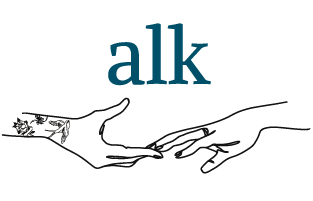Location: Haworth, England
Mission: To celebrate the lives and works of the Brontës, and their contemporary significance to a global audience.
Important Numbers:
-
- 60,000 – 88,000 visitors annually
- £1.3 million annual budget (2017)

The Brontë Society was established in 1893 to promote and preserve the works of Charlotte, Emily, and Anne Brontë. Since 1928 they have been headquartered at the Parsonage, the historic home of the Brontë sisters, where they lived for most of their lives and wrote most of their novels.
In June 2024, the Museum shared a series of social media posts exploring LGBTQIA+ history contemporary and local to the Brontës, how the sisters interacted with gender in their personal lives and fictional works, and how the Museum continues to foster inclusive culture.
The month’s first post outlined the laws that impacted LGBTQIA+ individuals in Victorian England, including capital punishment.
A subsequent post documented the life of Anne Lister, or “Gentleman Jack,” who was a gender non-conforming and sapphic individual who lived at the same time and area of England as the Brontës. Anne’s story is one of queer joy in light of the serious legal consequences of being queer, particular for those assigned male at birth. While there is no documentation that the Brontës ever crossed paths with Anne Lister, it is likely they were familiar with her story and writings. The post highlights the parallels between Anne Lister’s life and characters in Shirley (Charlotte Brontë, 1849) and Wuthering Heights (Emily Brontë, 1847).
A second mid-month post explored how gender identity played a role in the writing careers and themes of the sisters. All three sisters used androgynous pseudonyms when publishing their work as women were not taken seriously as authors. While these pseudonyms likely were assumed to advance their career, not because of a trans identity, the sisters used their experience to shed light on the issue of unequal gender roles and expectations. Charlotte went as far as to say:
“To you I am neither man nor woman. I come before you as an author only. It is the sole standard by which you have a right to judge me–the sole ground on which I accept your judgment.”
Their fictional works also explore issues of gender exploration, fluidity, and androgyny, such as in Villete (Charlotte Brontë, 1853). The Museum offered important reflection that the Brontës standout because of their ability to break gender barriers, but many female authors of the time remained unpublished and unknown, making inclusion efforts all the more important to ensure all voices have the opportunity to be heard.
The final post connected these historical themes to the Museum’s current inclusion, diversity, equity, and accessibility efforts. The Museum offers programs that connect the Brontës’ work to contemporary issues, including gender, as well as has an informal Equity, Diversity, Inclusion, and Belonging committee focused on the visitor and staff experience.
As the Brontë sisters carry an enormous legacy, much in the spirit of Jane Austen, Emily Dickinson, and Louisa May Alcott, it can be difficult for the public to take in new information or perspectives regarding the authors and their work. However, the “Pride at the Parsonage” series demonstrates the organization’s commitment to welcoming new viewpoints and encouraging queer possibility.

Did that example spark some ideas for your museum or organization?
Let’s connect to make those ideas a reality! Book a Discovery Call today.

